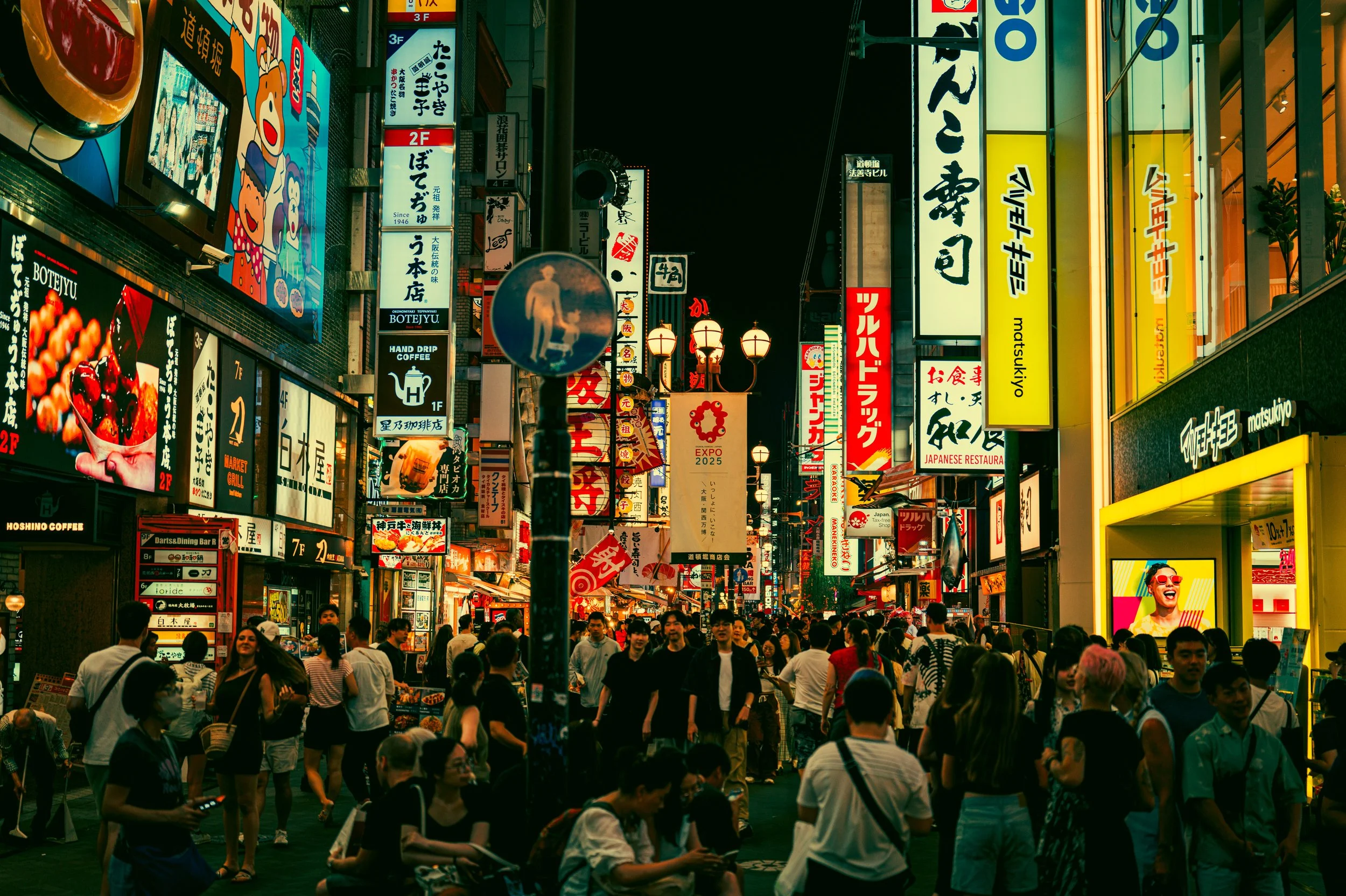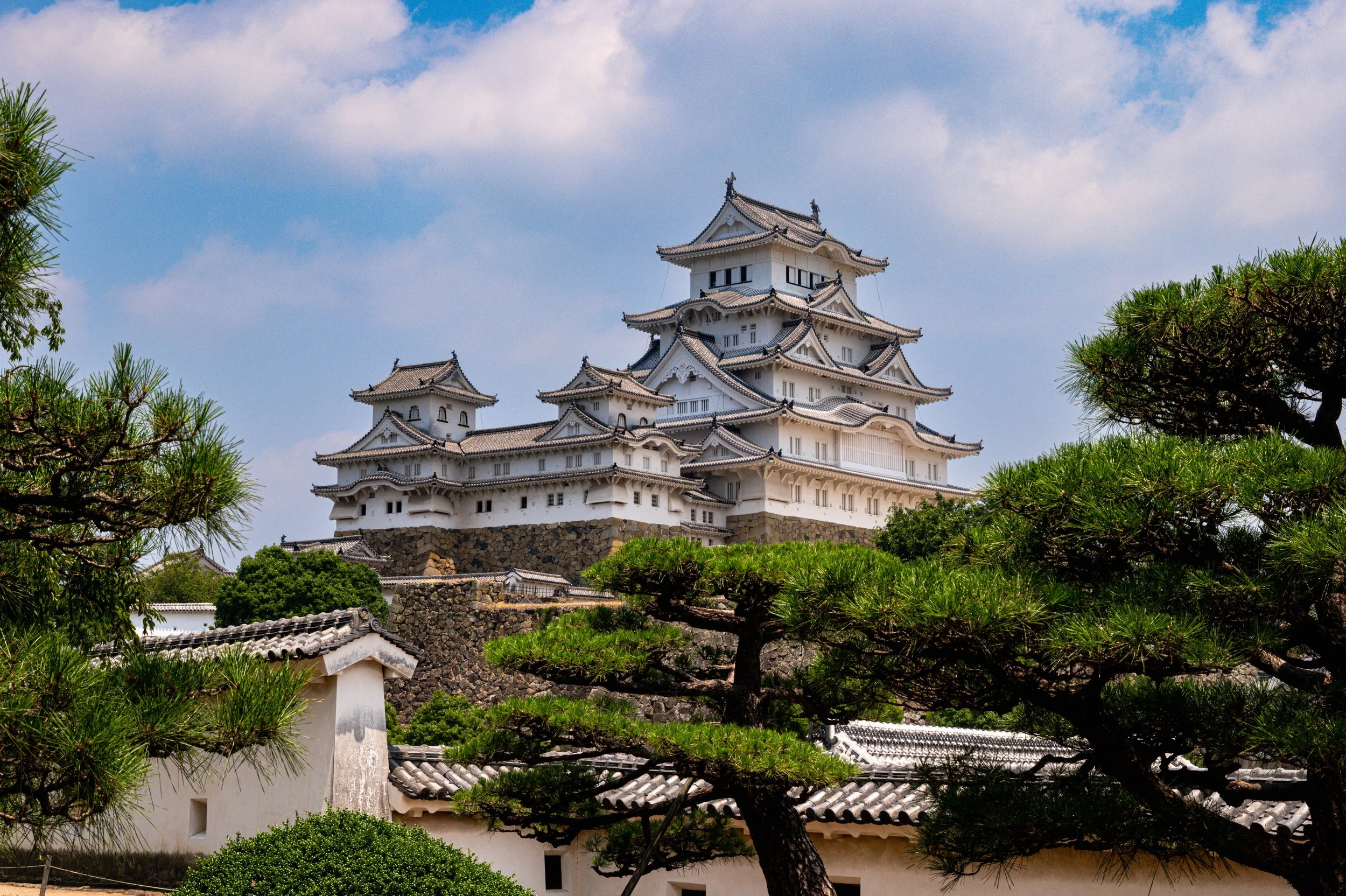Osaka
Exploring Osaka
This visit marked my first real experience in Osaka. Technically, it wasn't my first time in the city - I had taken a day trip from Kyoto 17 years ago to attend a Kabuki performance at the Osaka Shochikuza Theatre. Still, I hadn't explored much beyond the few blocks that surrounded the theatre. As I was planning my trip to Japan, Osaka intrigued me. I wasn't sure what to expect. I had heard that Osaka was different from Kyoto and Tokyo, and I was curious to see what this city had to offer.
Arriving at Osaka Train Station was an overwhelming experience, as the station felt like an underground city, with endless corridors, multiple levels, and a constant flow of people moving quickly in every direction. Compared to Tokyo, where signage is more intuitive and orderly, navigating Osaka's train stations proved more of a challenge. After some trial and error, I located the connecting train to Namba. Stepping into the Dotonbori area, I was met with a familiar sight: the Osaka Shochikuza Theatre. It was a moment of reflection, seeing how some things remain unchanged while everything around them evolves.
Dotonbori: A District Alive with Energy
Namba, and Dotonbori in particular, is known for its vibrant nightlife, dense concentration of bars and restaurants, and iconic neon signage. I arrived as the sun was setting, and the streets were already buzzing. Massive illuminated billboards towered overhead, loudspeakers broadcasted promotions, and restaurant staff called out to passersby in animated voices. I felt like I had stumbled upon the set of the Blade Runner movies and was looking around for Harrison Ford to appear.
In many ways, Dotonbori evoked a similar energy to Times Square in New York - crowded, bright, and commercial. But the atmosphere was uniquely Osaka. The flow of foot traffic was unstructured, making it difficult to navigate. Compared to Tokyo's more polished and orderly public spaces, Osaka felt grittier. I noticed more graffiti, litter, and open smoking, and the general sense of structure was looser. Still, there was a raw vibrancy that made the district feel very much alive. After some time exploring, I stopped at a ramen shop to escape the crowds and recharge before heading back out to explore more of what this neighborhood had to offer.
Visiting the Great Buddha at Nara
On my first full day in Osaka, I took a day trip to Nara, a city known for its historic temples and resident deer. Nara Park is expansive and peaceful, with deer roaming freely throughout the grounds. Upon purchasing "Shika Senbei" (special deer crackers), I was immediately surrounded. The deer, accustomed to visitors, weren't shy about approaching for treats - sometimes a bit too enthusiastically.
Within the park are two significant religious sites. I first headed towards the Kasugataisha Shrine, located in a serene wooded area deep within the park. As I approached, I was greeted by a path lined with hundreds of stone Shinto lanterns. The shrine grounds were being carefully maintained by attendants as I arrived, adding to the quiet reverence of the setting. Kasugatisha Shrine is simple yet powerful, a true place for peace and solace.
Traveling back to the center of the park is the famous Tōdai-ji Temple, home to the Daibutsu, a 15-meter bronze Buddha. Commissioned in 752 by Emperor Shōmu, the Buddha at Tōdai-ji was intended to promote peace and unify the nation under Buddhism. Standing before the statue, I felt a striking sense of calm. The scale, craftsmanship, and presence of the Buddha left a lasting impression. I was inspired when I first saw it 17 years ago, and I think I'm even more inspired today.
Independence Day at Universal Studios Japan
My second day in Osaka was July 4th, and I decided to celebrate Independence Day by doing one of the most quintessentially American things possible: visiting an amusement park. Amusement parks abroad offer an interesting blend of familiarity and novelty, featuring recognizable characters and attractions that are localized through culture and language.
Despite the 92°F (33°C) temperature, I spent over 12 hours exploring the park, experiencing eight rides and three live shows. Although my Japanese is limited, the shows were visually engaging and creatively produced, showcasing the distinct style of Japanese pop entertainment. Highlights included The Wizarding World of Harry Potter and Super Nintendo World. Both areas were highly immersive and meticulously detailed. I sampled a number of themed snacks - expensive but well-executed. The visit was an enjoyable break and a reminder of the universal appeal of well-designed entertainment.
Returning to Himeji Castle
On my third full day, I traveled to Himeji Castle, one of Japan's most iconic and best-preserved historical sites. This was a highlight of my trip 17 years ago, and I was eager to return. The castle, originally built in 1583, stands nearly 50 meters tall and spans six stories. Walking through its wooden interior, navigating steep staircases and narrow hallways, I was struck again by its architectural sophistication. Designed for both defense and ceremony, the structure reflects centuries of Japanese ingenuity and resilience.
Having visited castles in the UK and Ireland, I couldn't help but notice architectural parallels: defensive turrets, small windows for archers, and central keeps. However, Himeji Castle's unique design elements highlight the cultural and historical distinctions between the East and the West. That it remains standing after nearly 450 years, and welcomes over a million visitors annually, is a testament to its enduring strength and significance.
Final Thoughts
Although my time in Osaka was brief, primarily spent in the Namba and Umeda districts, the experience offered a compelling glimpse into the city's character. Compared to Tokyo's structured precision or Kyoto's historical elegance, Osaka felt more spontaneous, expressive, and unfiltered. There's much more of the city and the Kansai region that I hope to explore on a future visit. For now, I leave with a deeper appreciation for Osaka's energy, its contrasts, and its role in Japan's broader cultural landscape.

